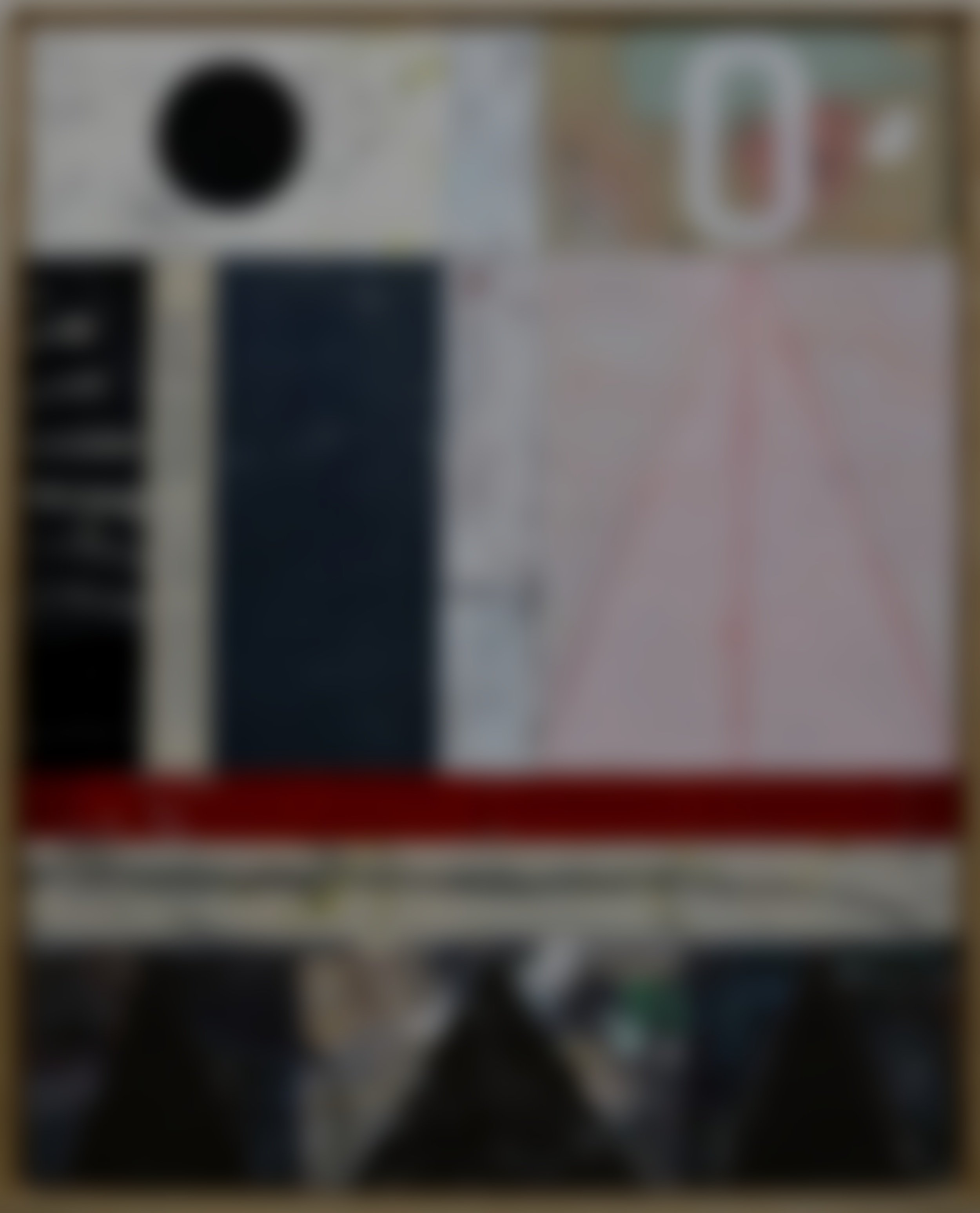
Zachariel
According to Xavier: “From the beginning, we would see hidden faces in the paintings we created -– sometimes small and obvious, other times subtle and abstract.”
Observing this unintentional imagery in the abstract panels like Rorschach inkblots, Spiller + Cameron wanted to find a way to create faces, portraits, and important cultural images in their works. They also pulled inspiration from Moira’s earlier paintings of Totemic heads.
This series is the first not confined to 9 panels. Thus liberated, they first began to paint an image of a complete head onto one single large canvas, working for months on the oil painted areas, building up layer after layer of different colours and varieties of mark-making. The areas were scratched trough, scraped back, and sandpapered to reveal hidden layers beneath.
Constrained by the more traditional formula of a single canvas (and ever mindful of Picasso’s quote that “[t]he urge for destruction is also a creative urge!”), the oil paintings that had been created over months were ignominiously spliced and deconstructed into abstract components, containing triangles, dots, and letters.
These spliced components were combined with various panels relating back through their previous incarnations: paper bags, canvas tote bags, and swatches of paint-smeared rags. They were combined with acrylic panels, charcoal, chalk, oil pastels, pencil, ink and ephemeral paper notes. The artists constantly challenged their construction skills by meticulously re-assembling copious materials and mediums. They amalgamate detritus from their studio with personal history elements, every element finding a specific position within the overall image.
Symmetry is extremely important in this series -– areas are laboriously puzzled together, lined up, and often cut apart if the alignment is not correct. Some of the assemblages are made up of over 30 components. According to Xavier: “Sewing brings the precision and structural element to the works, and there is no better method to achieve the flawlessly connected panels to create the impression of one piece… Once finished, they have a sense of permanence.”
It was never intended that the face would be easy to see at first glance; the single image made from various panels dominates the entire area by completely filling the space. The works have undergone an alchemical process of reincarnation: broken down, destroyed, sewed back together, restructured. The characters emerge with each of the heads – large totemic face like the Easter Island heads – taking on a personality of its own.
Spiller + Cameron are appropriating source material from primitive masks, tribal marks and tattoos, and cave art handprints. They have also examined real facial markings, breaking down different features into geometric shapes, letters, and lines. In this way, the heads become characterized with age-ravaged scars and structural facial markings.
According to Xavier: “Our aim is to make links back… to use the history of art to create something new.” Understanding the cultural importance and potency of portraiture throughout history, all paintings in this series are named after Angels -- significant iconic characters from throughout history. Their presence, towering like guardians, embodies a sense of protection.
From Angel Heads
Year: 2020
Medium: Canvas, paper, cotton bed sheet, oil paint, acrylic paint, pencil, spray paint, and charcoal
Hand signed on verso
Size: 43 x 35 in (109 x 89 cm)
Frame size: 45 x 36 3/4 in (114.3 x 93.3 cm)

